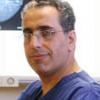The answer to what to do when being informed of a benign breat lump as London Breast Care expert, Mr Simon Marsh says is;"don’t worry! Benign lumps are not cancerous and usually can safely be left alone." However, he goes on to point out that some benign lumps are not as benign as others and sometimes things that are not even lumps may need to be removed.
So what are the most common benign breast lumps?
Fibroadenomas - although they can get quite large they are normally completely harmless. A breast cancer will initially start from normal breast tissue so that although there is no increased risk of breast cancer in women with fibroadenomas, the breast tissue within it can still turn cancerous. However, it is no more likely to do so than in any other area of the breast.
Breast cysts. - These are harmless, although a nuisance, but there are exceptions. Cysts in older women (over 70 years) are less common and rarely may contain an early cancer in the wall of the cyst. If the fluid is blood stained or the cyst does not look typical on an ultrasound scan, further tests may be needed.
For full article: I’ve been told I have a benign breast lump. What should I do?
See this article also for Breast lumps in men








